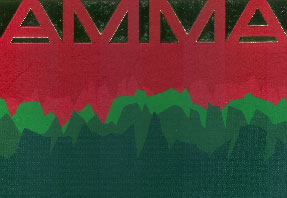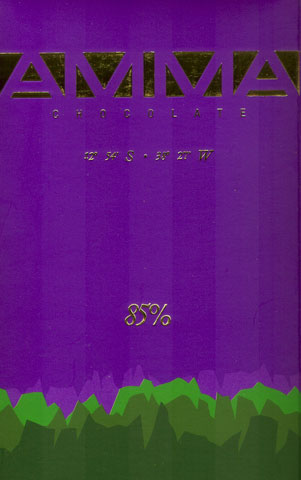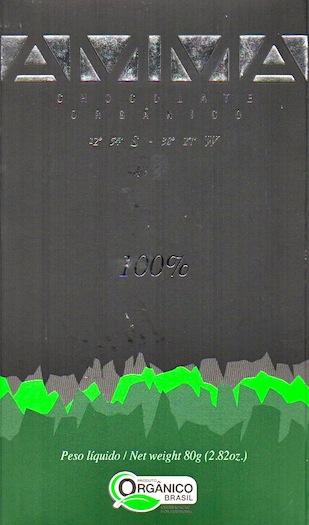| Founded: | 2009 |
| Headquarters: | Fazenda Monte Alegre, Mata Atlântica, Bahia, Brazil |
| Style: | New School |
| Characteristics: | cultivated-cacáo gone wild on feral fruit signatures (dependent on genotype & processing) |
| Ferment: | fairly deep… 7 or so days |
| Roast: | low / slow ~265ºF |
| Conche: | customarily 48 hours |
| Impact: | Substantial.Directed by Diego Badaró & wingman Frederick Schilling (ex-Dagoba). Diego is a 5th generation scion whose cacáo roots in Brazil have dug deep. He belongs to a fabled family, written about in Jorge Amado’s historical novel Terras do sem fim (‘The Endless Lands’ in his native Portuguese; published in English under the title The Violent Land). In it Amado chronicles a jungle-version Real McCoys during the early 20th century. Instead of the Hatfields, the Badarós deal with the rival Silveira clan. They resolve land disputes in the Bahian sertão (backlands), where the shadow of cacáo darkened every heart, thru tocaia (an assassination code somewhat unique to the rainforest). Complete with fazendeiros (ranchers)-turned-jaguncos (hired killers) against a backdrop of the legendarily ferocious oncas (wild cats), all with a Romeo & Juliet twist in the subplot (eventual intermarriage), it serves as a measure of how far cacáo has come & still needs to go.
The Badarós lost out to the da Silveira clan in The Violent Land but Diego may be exacting the sweetest revenge by producing world-class chocolate… a rich role-reversal in which the fallen (a metaphor for ‘people-power’) topple the victors (& by extension the aristocratic Colonel da Silveira). Fast forward to today: as heir to the estate, he settles scores by passing chocolate around as calm as a peace pipe. Because of it, lands, which recently lay decimated, now breathe a new Spring. Once the #1 cocoa exporter to the world, Brazil’s industry buckled under devastating diseases with accusations swirling about that they were maliciously released amid local political conflicts. Biological terrorism in effect, rekindling the specter of burning down cacáo groves dramatized in earlier epics. The twin scourge of Witches Broom & Black Pod contributed to rampant deforestation, compounded by a collapse in the price of cocoa on world commodity markets. By the early 1990s the landscape roiled in a kind of war zone between feuding factions & large landholding families amidst a forest-in-ruins, making the country a net importer of what it once owned. The felling & clearing of trees for brazilwood (from which the country derives its name) made way for, first, manioc, then coffee, cacáo, & ultimately the railroad that cut ever deeper into the Mata Atlântica coastal forest. This created a limited number of uniform crops which, in the short-run, may be easier to prune, but at gains fraught with adverse long-term consequences. Diego & his partner have set out to remedy the situation & play their part to elevate the reputation – his & Brazil’s – that they’re more than just the home of low-grade ‘Forastero’. His family’s Fazenda Monte Alegre cacáo grove sits on the banks of the Rio de Contas, Mata Atlântica, Bahia. It is a semi-wild forest teeming with biodiversity. There they tend to cacáo trees – some over 100 years old – on this 150-hectare plot. The cultivars planted at Alegre display diversity within uniformity: variations on an Amelonado genotype originally sourced from upcountry Para, Brazil. Now a cluster of F1 & F2 generation progenies, they constitute a classic hybrid seed garden. It formed from the cross-pollination of male & female trees. Over time significant tree-to-tree variation occurred & eventually each became somewhat unique. Proprietor Diego designates them by various exotic trade-names: Parasinho, Puerto Seguro, & Palmahita. Generally, all bear small, round pods containing likewise small seeds. More than a few, however, produce huge flavor… bold yet kind… reflective of a big Brazilian rebound in the chocolate world. He & his venture hold the potential to be the premiere bud-to-budsmen; that is, cacáo flower-buds to human taste-buds via planting, producing, processing, & packaging all in-house — under one roof so to speak — where cacáo grows in situ & can be crafted into chocolate. It’s the ‘home-field’ advantage he inherits. Badaró has a personal hand in every step of the value chain, which puts him in very select company with Claudio Corallo plus a handful of others. This is the future of chocolate… happening now. These are happier days at Fazenda Monte Alegre. Relative tranquility has returned to the land. The organized chaos of the rainforest pulses onward. All in keeping with Amma’s namesake. Whether in the North or Far East, ‘Amma’ denotes motherhood. For Diego that means in concert with the Earth & Mother Nature. Growers are usually optimists; & big gamblers too. Maybe that’s why we like them so much. They keep planting. And the bet is paying off.
|
Asochivite
Esmeraldas
by Goodnow Farms








